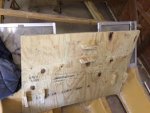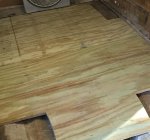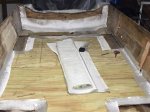A little late here but I want to possibly correct some confusion about Woven Roving. Back a while ago I built many Rib boats for our US Navy as replacements for the old motor whaler boats used since WWII. The contract spec called for 6 layers of 24oz WR on the hull bottom after the skin coat, NO mat in between. After winning the contract at our first contract meeting I questioned that there was no mat between layers of WR and was worried about delamination. The Navy Fiberglass expert told me that they had done extensive testing on just that subject and that the interlaminar shear results were the same or better with out mat between the WR. During the contract we had to send many samples of each hull out for testing at an independent lab. The results of those tests showed that this was all true. There is no benefit to using mat between layers of WR unless you want to increase the thickness cheaper than more layers of WR. Just an FYI.
I also tried to talk them into using a knitted fabric such as 1708 and was told that the stiffness was just where they wanted it and we would have to use more of the knitted fabric to achieve the same flexural modulus. Also the added expense didn't gain them anything. There is really more to it but talking the navy into anything new when they have something that works is very difficult with good reason. There are lives at stake, they can't just stay home when the weather is bad,,,,,
























